DIY Zellige-Inspired Tiles!
Hi, Everyone welcome to part 2 of our kitchen budget makeover. If you missed it our last project was repainting our kitchen cabinets to look like wood. Today were sharing how we made tiles from concrete and installed them!
Handmade tiles are all the rage right now. We love the look of zellige tiles and really wanted to try and make our own handmade tile using concrete. BOY was this an adventure! So much trial and error and I would totally do it again. We made so many mistakes in the process but, once we figured out the technique we were on a roll. I’ll be sharing all that on here!
If you’re looking to make your tiles a specific color you came to the right place! You can make them any color using colored powder pigments.We got ours from @zcounterform.
HOW IT STARTED!
Here’s a snippet of our kitchen before and after. We had this ugly aqua wallpaper that wasn’t doing anything for the kitchen. Back when shabby chic was trendy we enjoyed it. I look at it now though and wonder what I was thinking painting our kitchen blue! 🙁
Here’s our kitchen after! What a transformation! I can’t believe how much the new tiles brightened up the kitchen. There’s still so much work that needs to be done. We removed the microwave from the top because I’m hoping to get a hood there. Also can’t wait to paint the top cabinets and get a new range.
Let’s GET STARTED!
With this guide, you’ll learn how to make your own tiles using concrete & simple plastic molds.
Supplies :
- concrete mix
- colored powder pigments ( white and almond )
- plastic tile molds
- water
- concrete waterproof sealant
- Mixing supplies
- 2 buckets
We knew we needed white concrete for this project so we reached out to zcounterform and they provided us with all the supplies for our DIY tiles! Thank you so much for sponsoring this project zcounterform!
Shop the white concrete + tile forms here – concretecountertopsolutions.com/LILYARDOR
USE CODE FOR 10% off : LILYARDOR
Let’s Get Started!
Step 1. Mix Your Concrete
Combine 10 pounds of concrete with 20 ounces of water. We used white concrete, which turned out to be a light, off-white gray. This served as one of our darker shades. Adjust the water quantity to achieve a pour able consistency. If you’re unsure, check out our video guide for a clearer understanding.
You’ll need two buckets to work with. Pour water into one bucket then concrete over the water. We tried pouring the water over concrete and it was almost impossible to mix. It makes the mixing process way harder!
Step 2 : Coloring your Concrete!
For a Zellige look, we created a palette of off-white, and beige/gray, and light gray. A total of three shades of tile. Most of our trial and error came from trying too many shades. Then we realized too many shades starts looking too messy. Three shades or even 4 was the perfect amount.
To make the off white, our lightest shade, we added 1/4 cup of bright white powder to 10 pounds of mixed concrete.
For our light gray we used the concrete alone. You can choose to add a tiny bit of charcoal but we found it cooled down the gray too much and became to dark.
For our warm beige/gray we added 1/4 cup of white and 1/4 teaspoon of almond colored powder to 10 pounds of concrete.
Step 3: Pour into Molds!
Take your time with this step. Pour the concrete into the molds, being careful not to overfill. It’s better to under-pour slightly than to over pour, as excess concrete can create sharp edges that require sanding.
I wish we learned sooner that over pouring even a tiny bit would create so much more work for us.
We got our tile molds from zcounterform. They come in a pack of 12 with 6 tiles on each mold. They gave our tiles the perfect texture for our zillege tile.
Just look at that beautiful handmade texture the tiles have!
TRIAL AND ERROR!
Here’s what over pouring does. It creates sharp edges along the tile making it too thick and unusable.
I had to pull out my dual sander and sand a lot down to save half my tiles. Otherwise I would of tossed them out. This took me an additional couple of hours to do.
Step 5 : Let it SET!
Your curing time will really depend on the temperature of the room. Our first batch that we poured was in our shop and even though we tried to heat the space the floor was freezing because it’s winter outside. It took about three days to cure.
The second batch we poured indoors in our living room and it only took about 1.5 days to cure.
To remove from the molds simply flip the molds over and pop the tiles out. If your tiles keep breaking then the concrete hasn’t set yet. Give it another day.
Installation tips!
We share the full installation process in our video.
You’ll need to seal your tiles to waterproof the concrete. We used the zcounterform sealant. I applied one coat onto the tiles before the grout and 2 coats once we grouted.
You’ll need at least 3 coats of it. It’s really easy to apply. I just rubbed it on with a microfiber towel.
I was worried the tiles wouldn’t have the correct shine on them but, that sealant was the perfect finishing touch! Look at that shine! It almost looks pearlescent.
We have been enjoying our light and airy kitchen! The tiles made such a huge difference!
I love how the different thicknesses in tile give the wall so much character! This will match our stone wall perfectly!
Was this a hard project!? YES! Was it worth it! YES! Would I do this again?? Absolutely!!
I think now that we know the steps and what works it would be so much easier the second time around. That’s why we share all of our mistakes with you!
I shared way more in the video if you missed it. More tips + tricks + mistakes. Also how we installed the tiles.
Remember, the beauty of handmade tiles lies in their imperfections, making your backsplash truly one-of-a-kind. We were so worried about little imperfections when making our tiles but, that gave it so much character! I would be so tempted to try this in different shades of hunter green!!
That’s all! Happy Tiling!
If you have any questions. Let me know in the comments.
I’ll see you all next time.
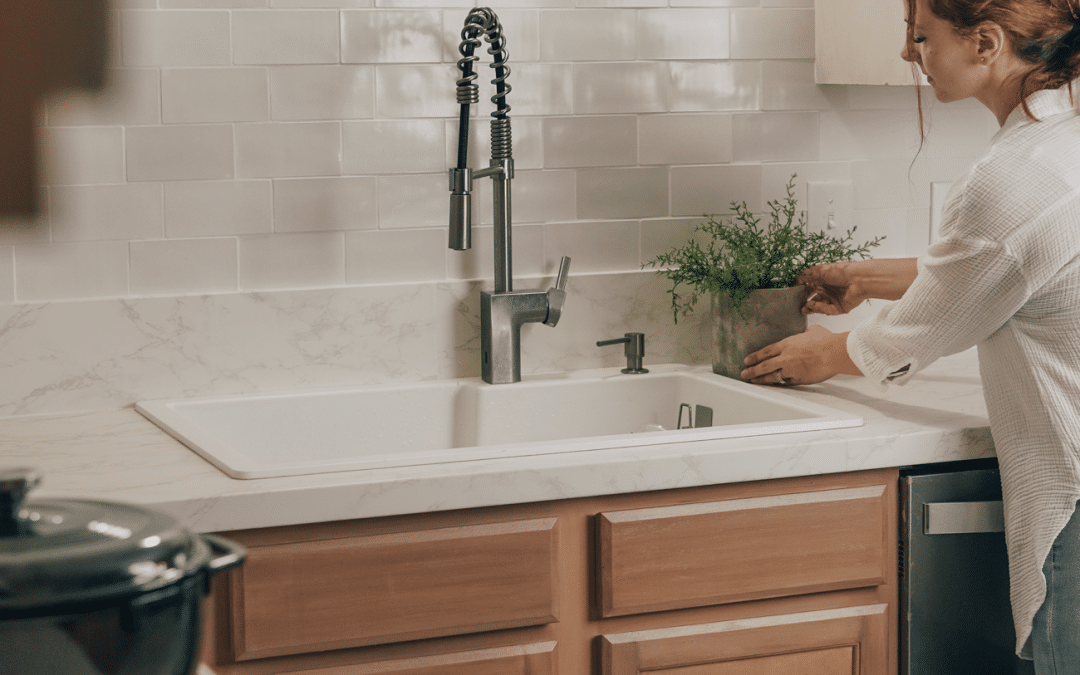
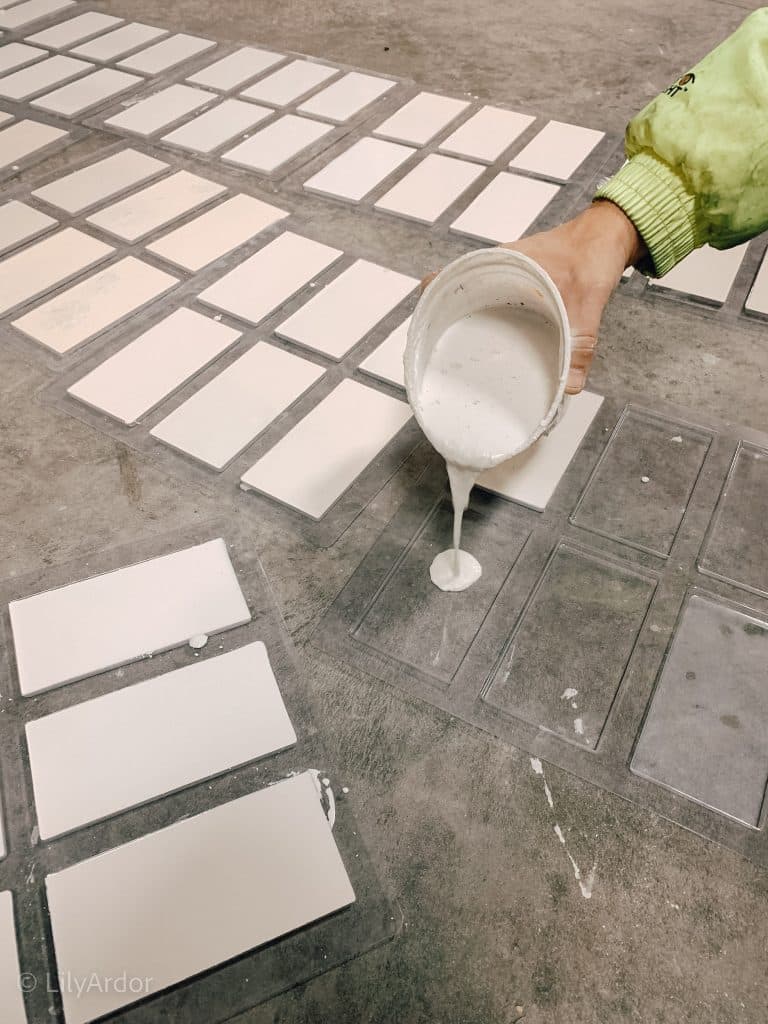
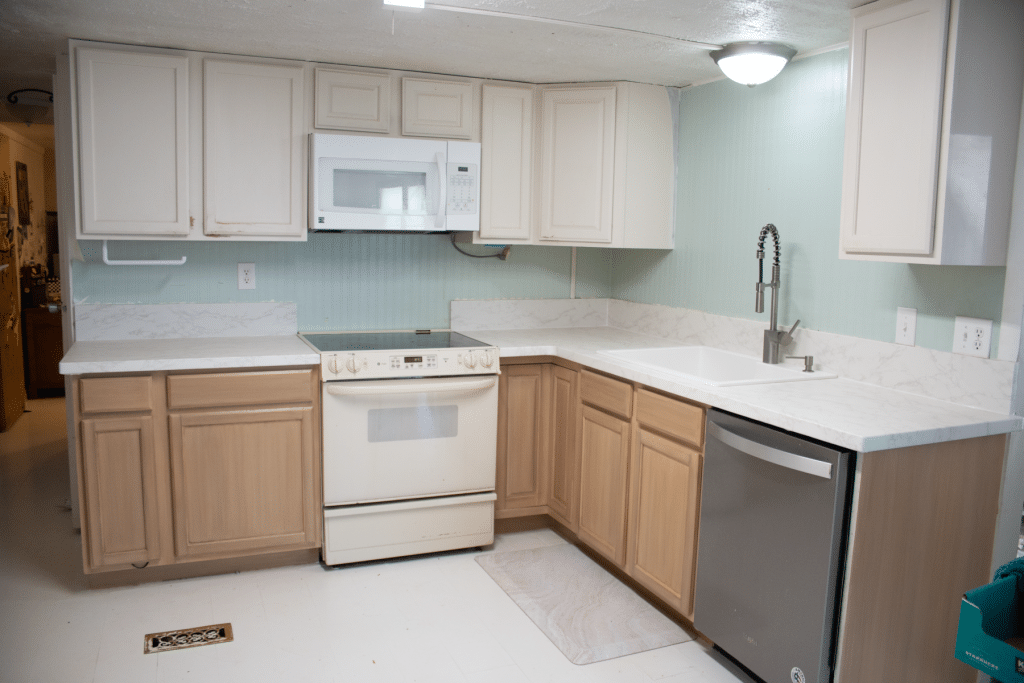
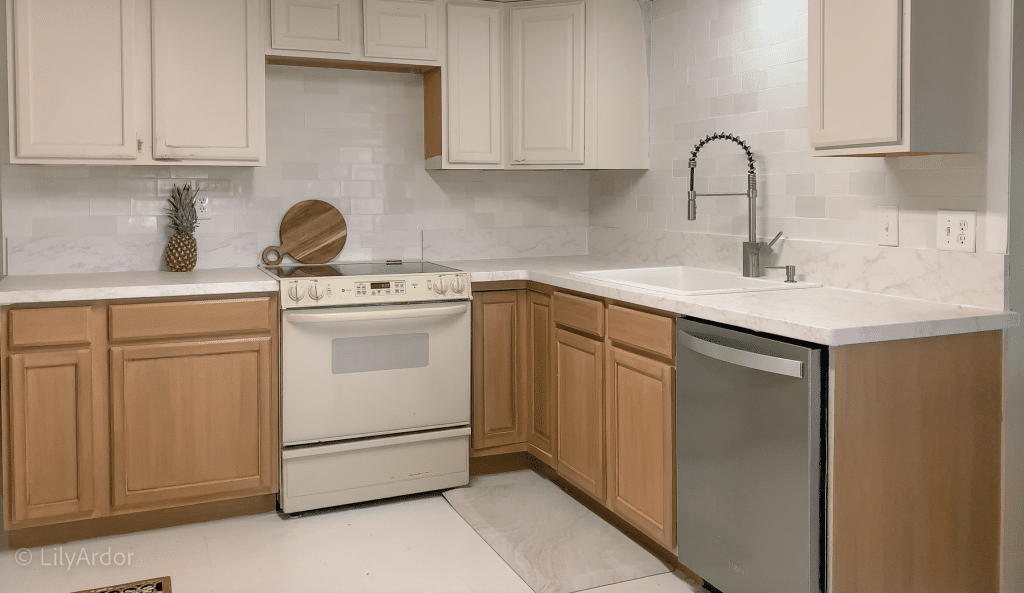
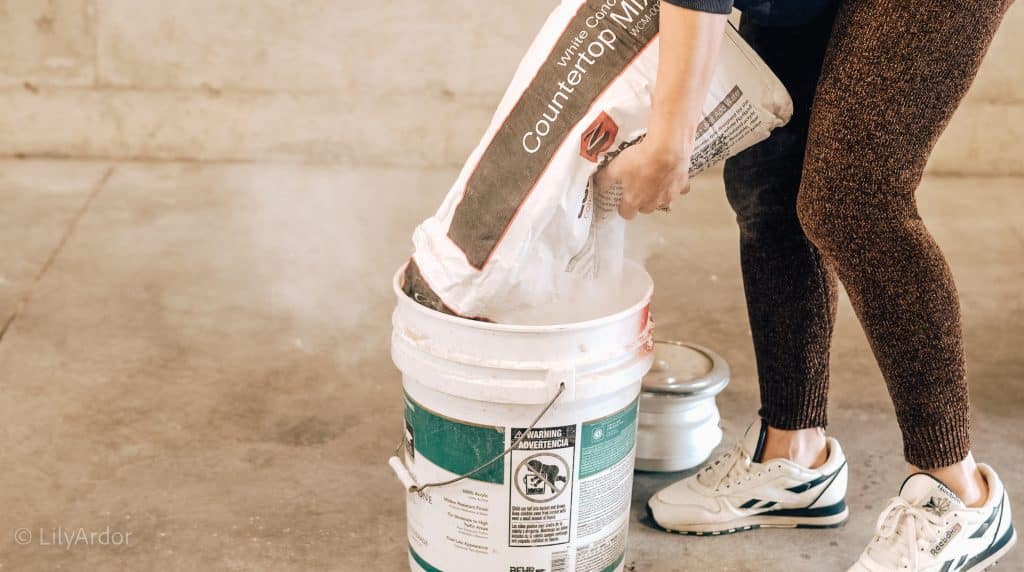
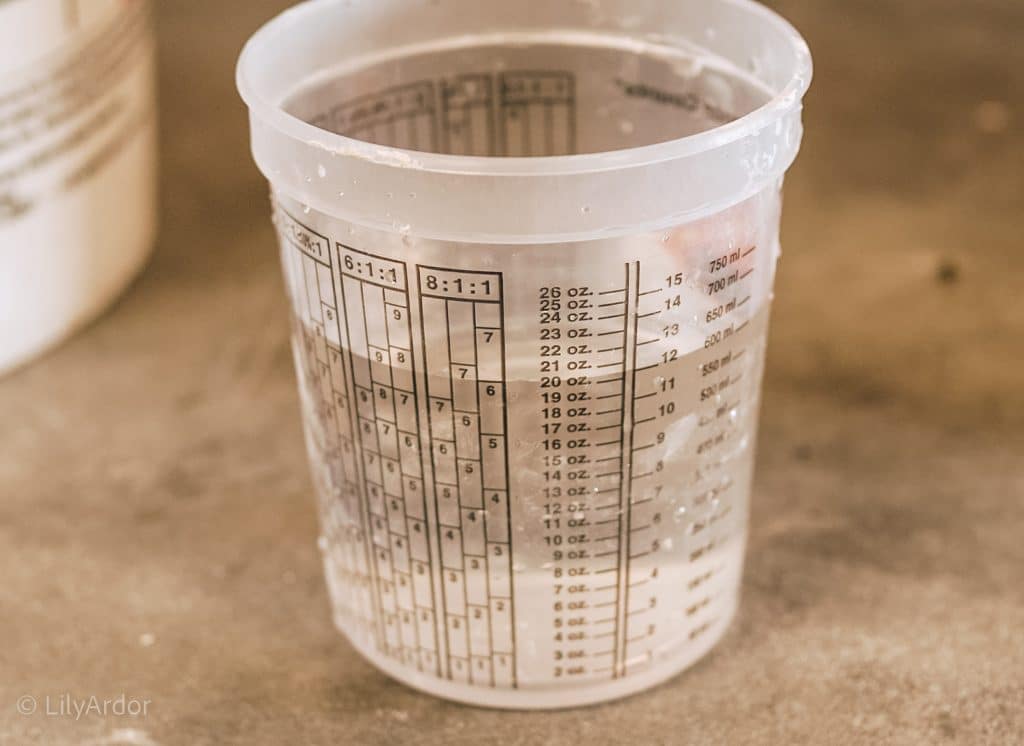
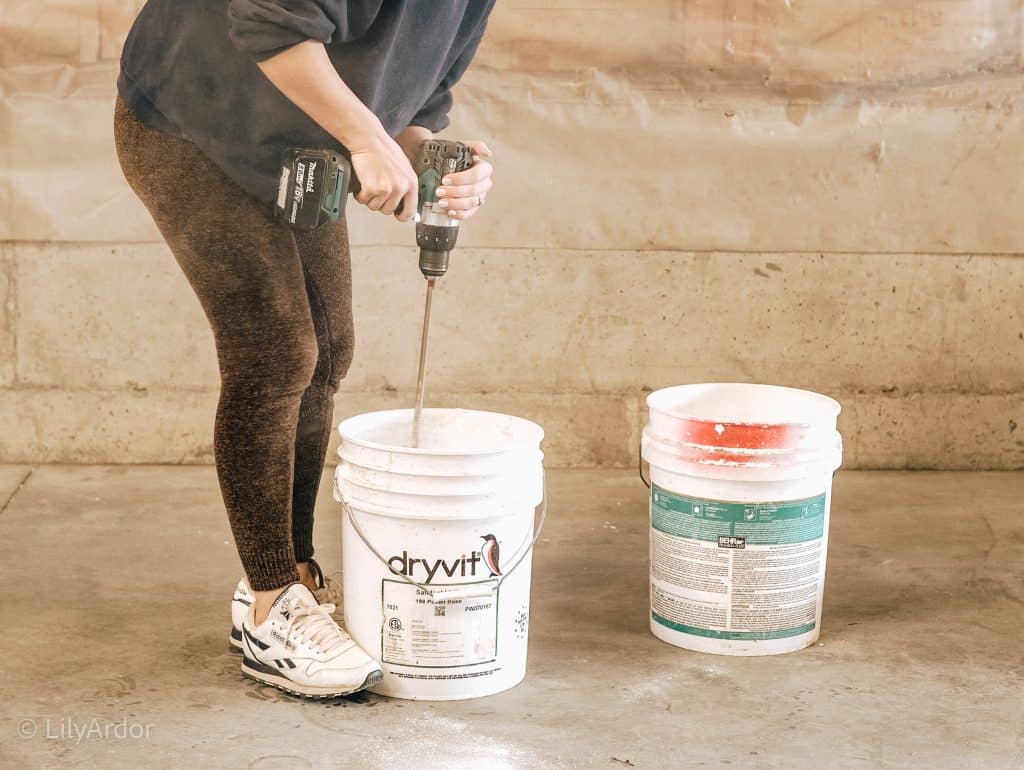
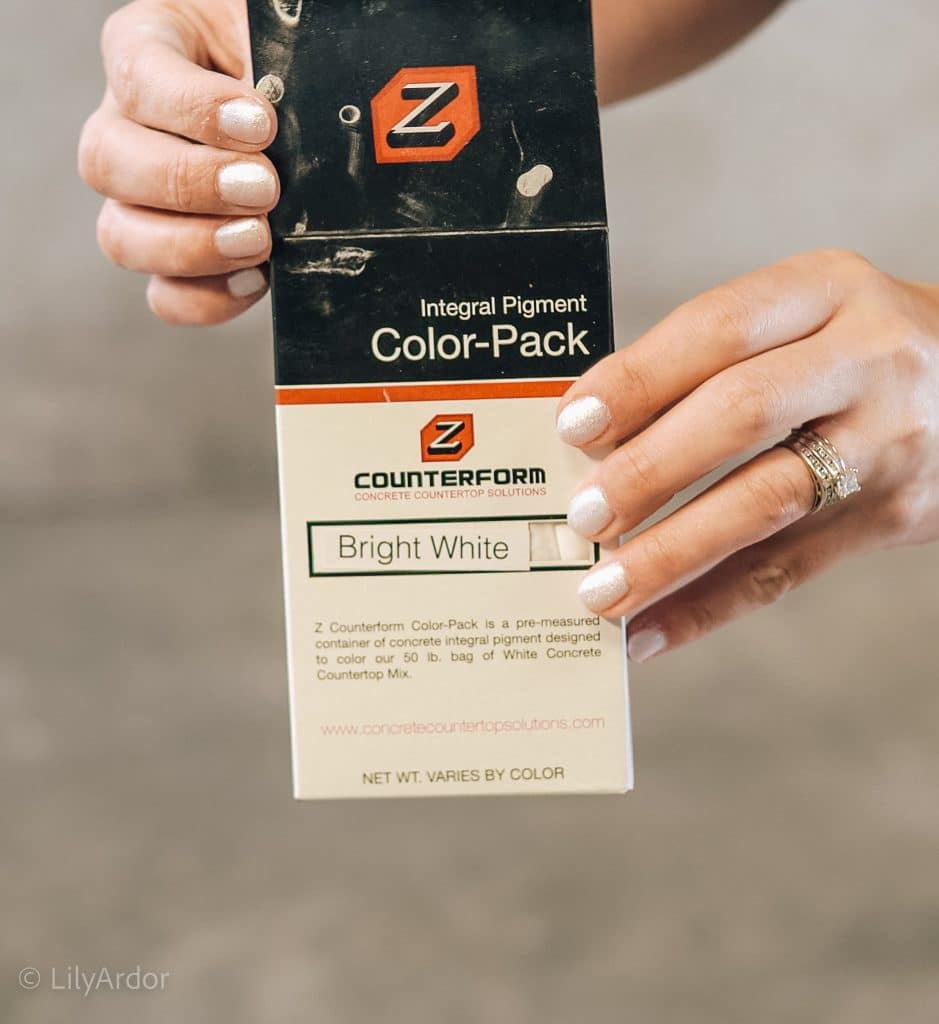
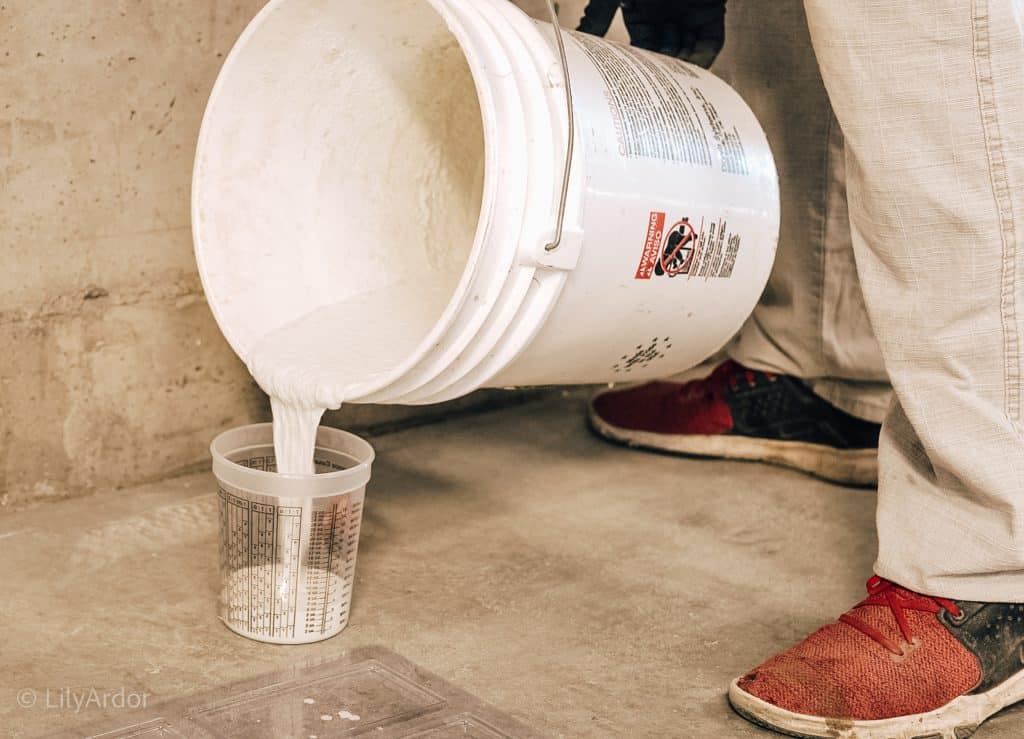
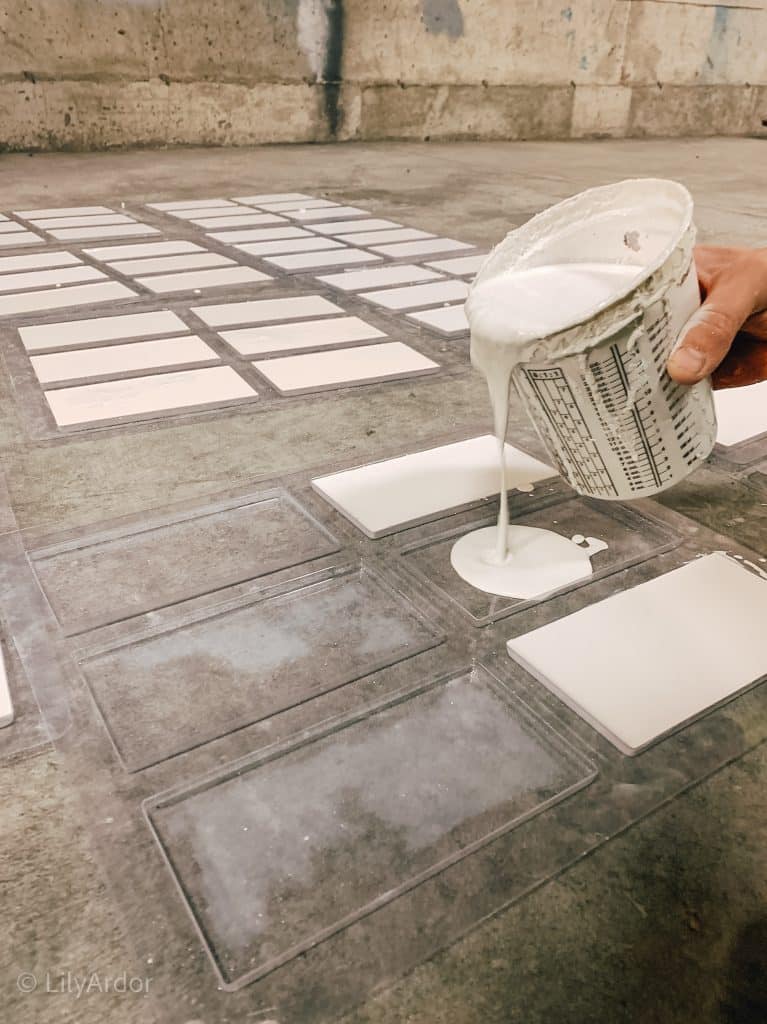
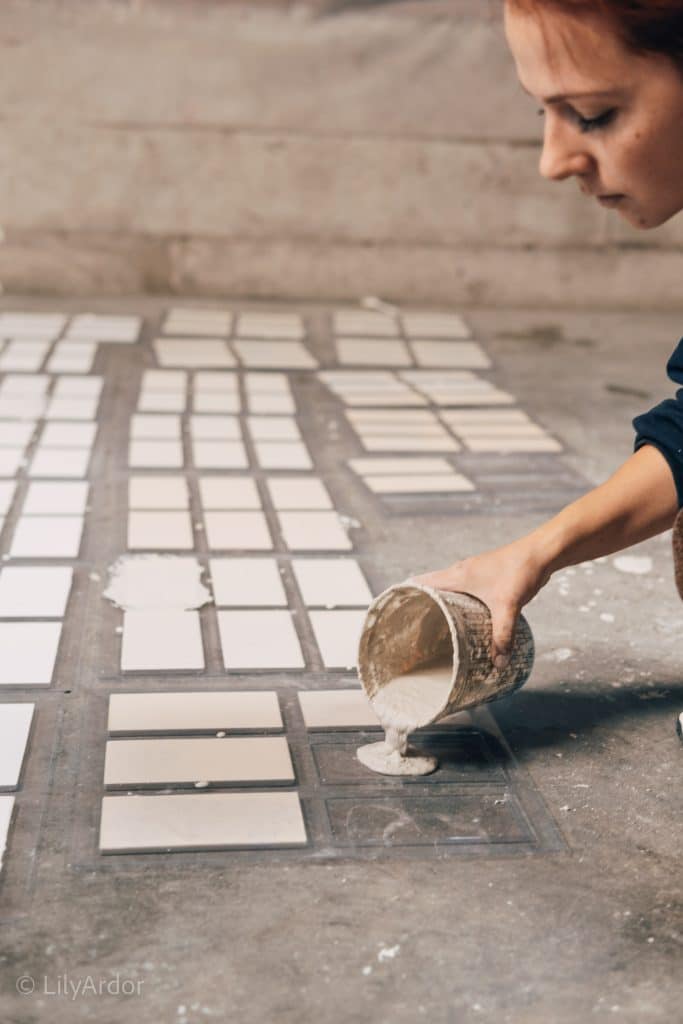
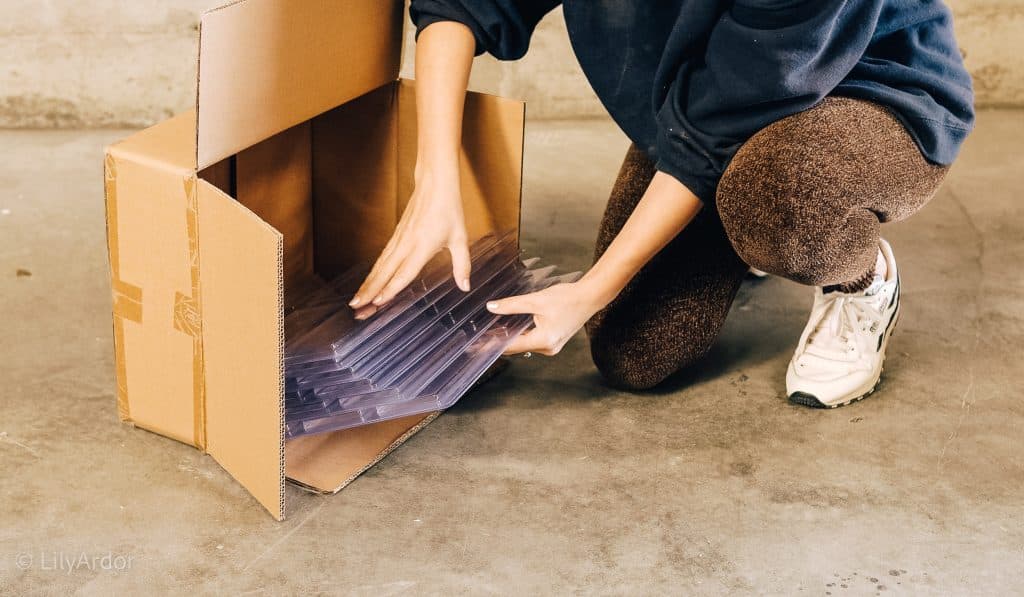
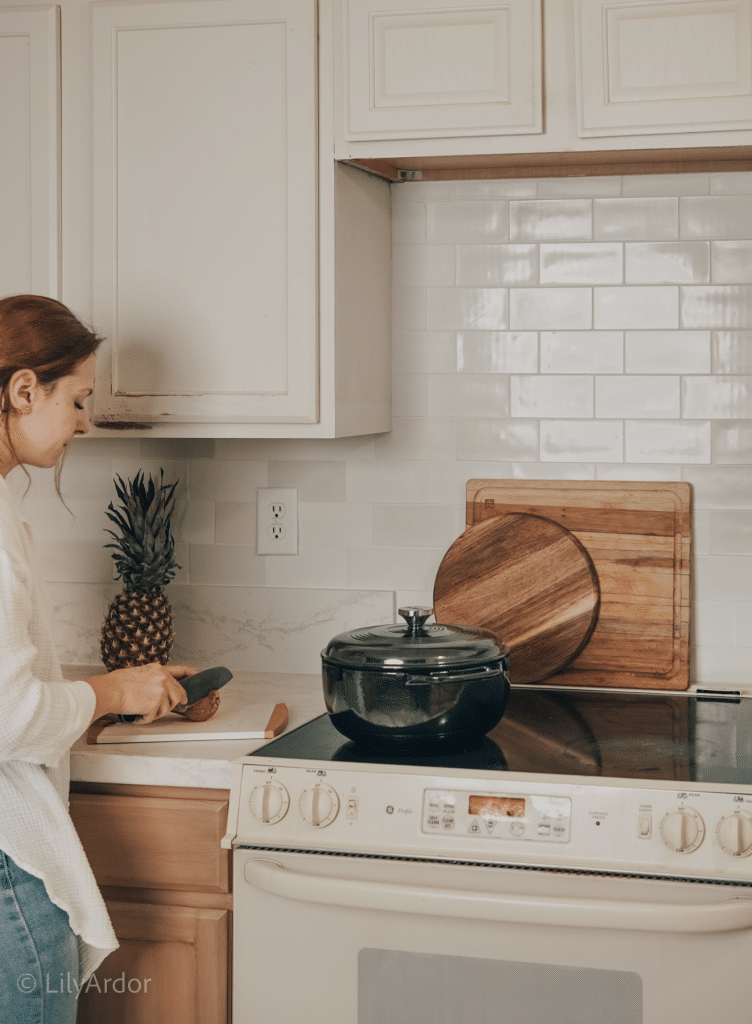
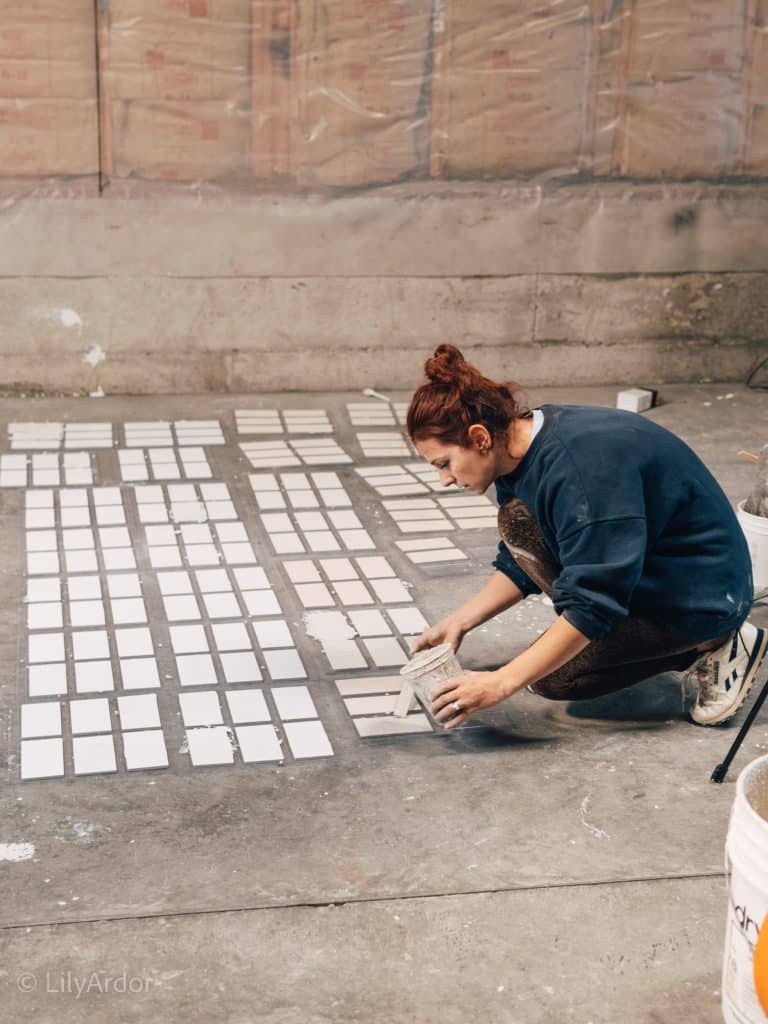
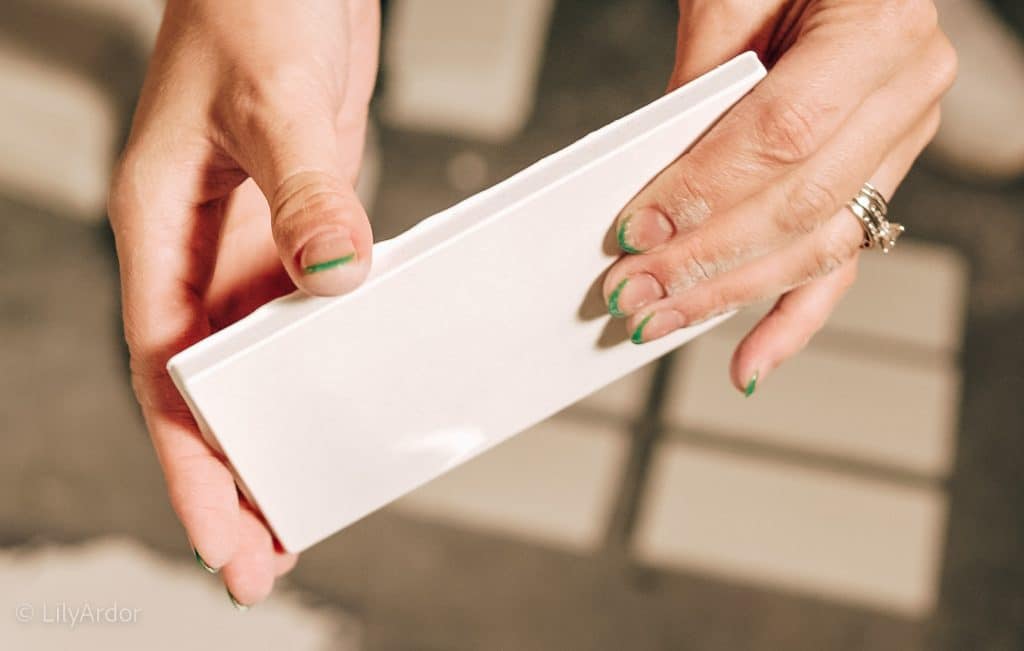
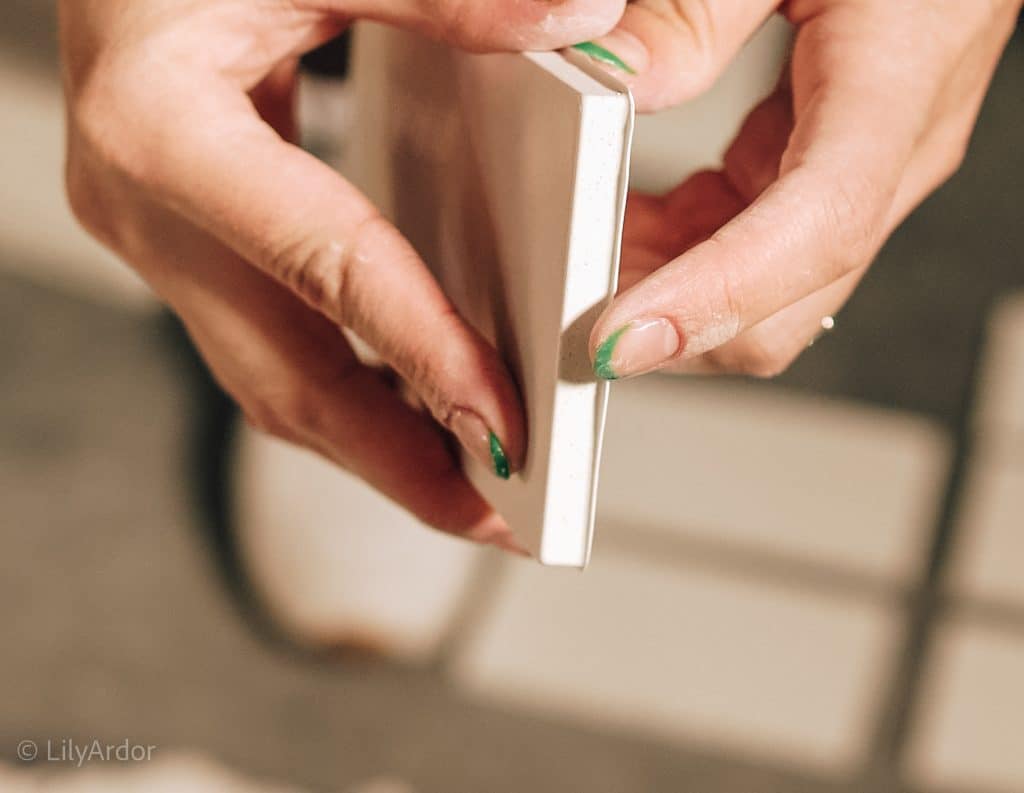
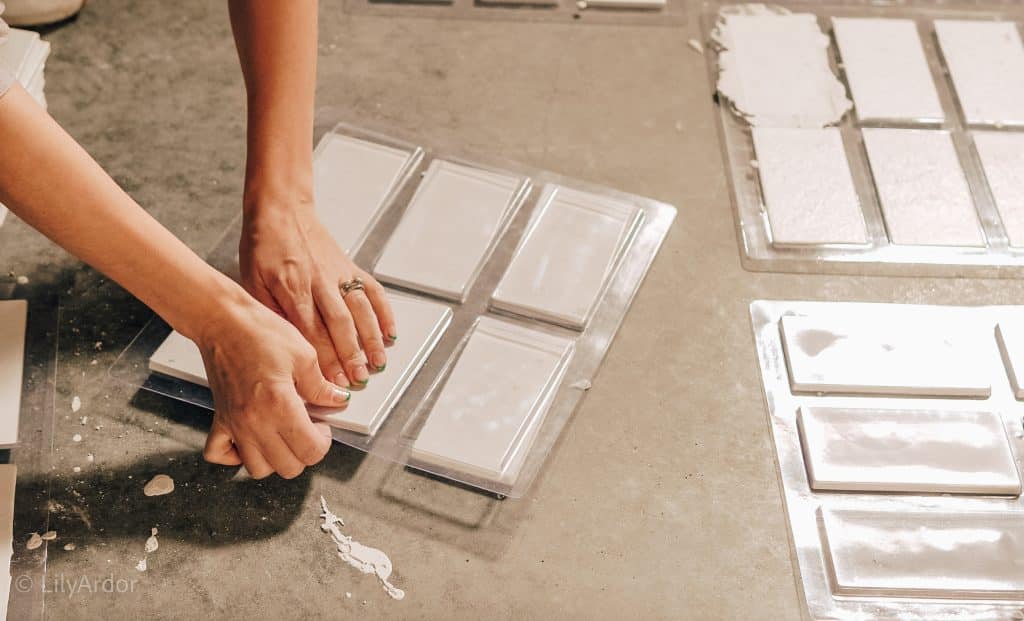
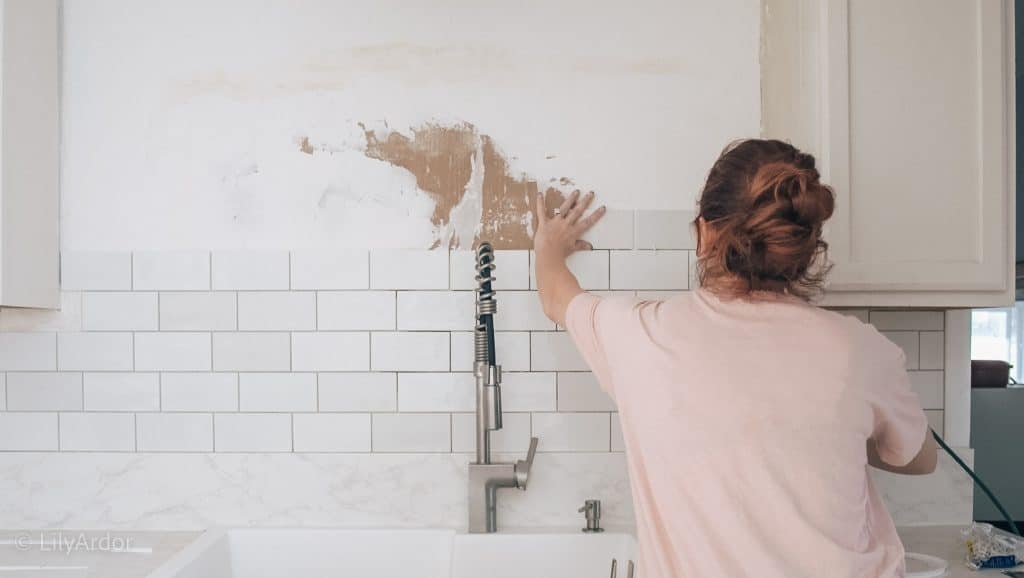
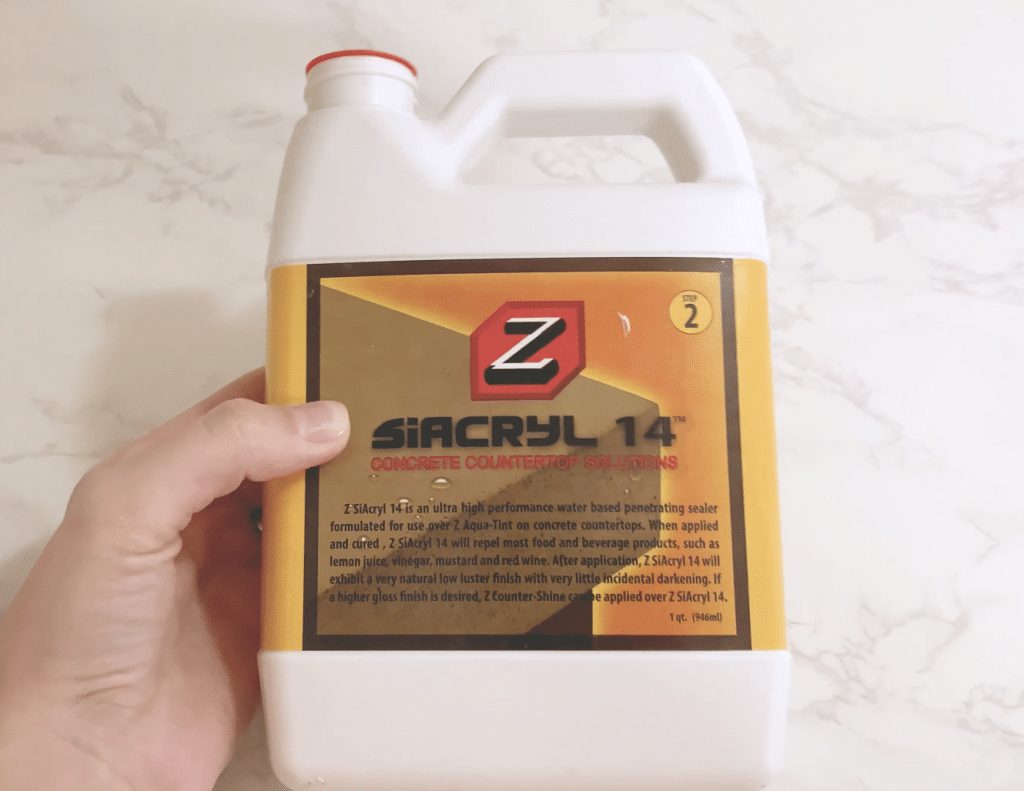
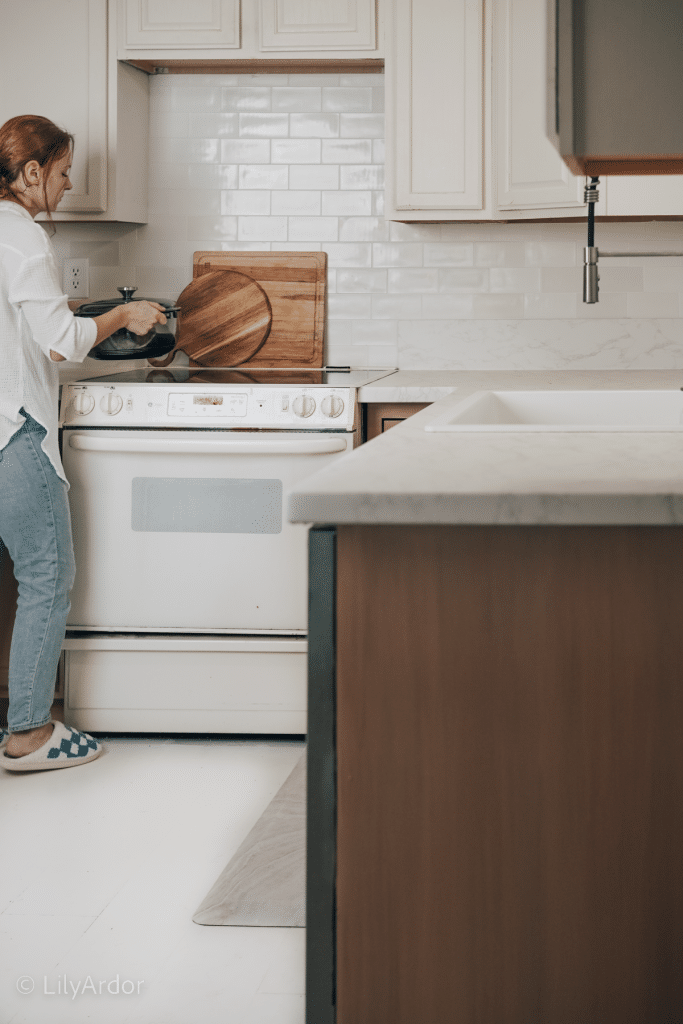
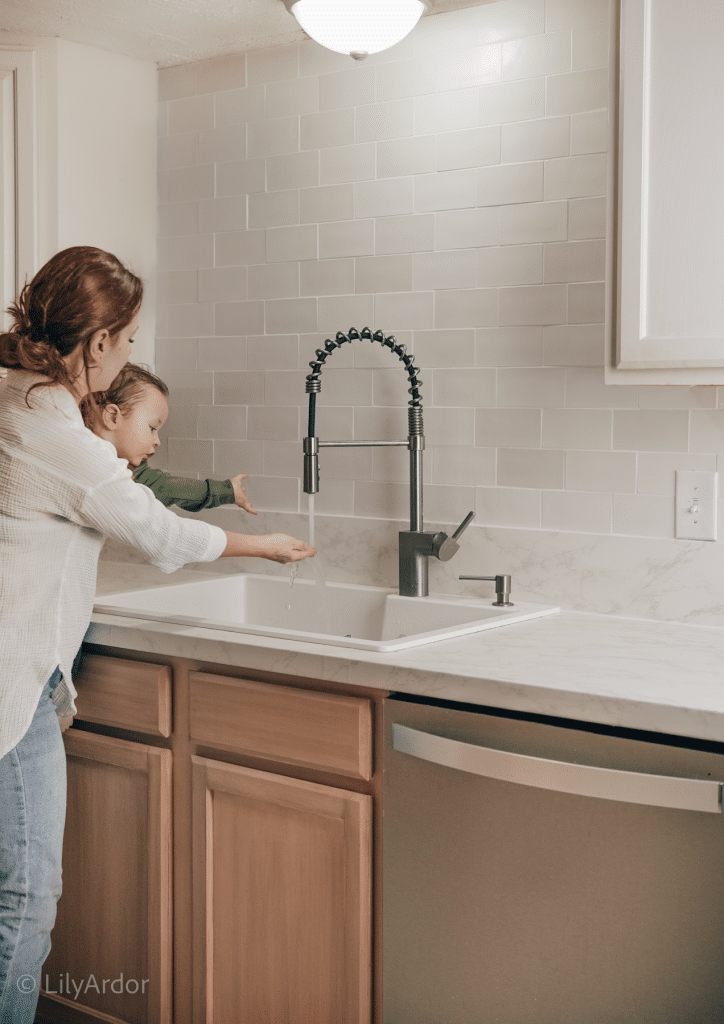
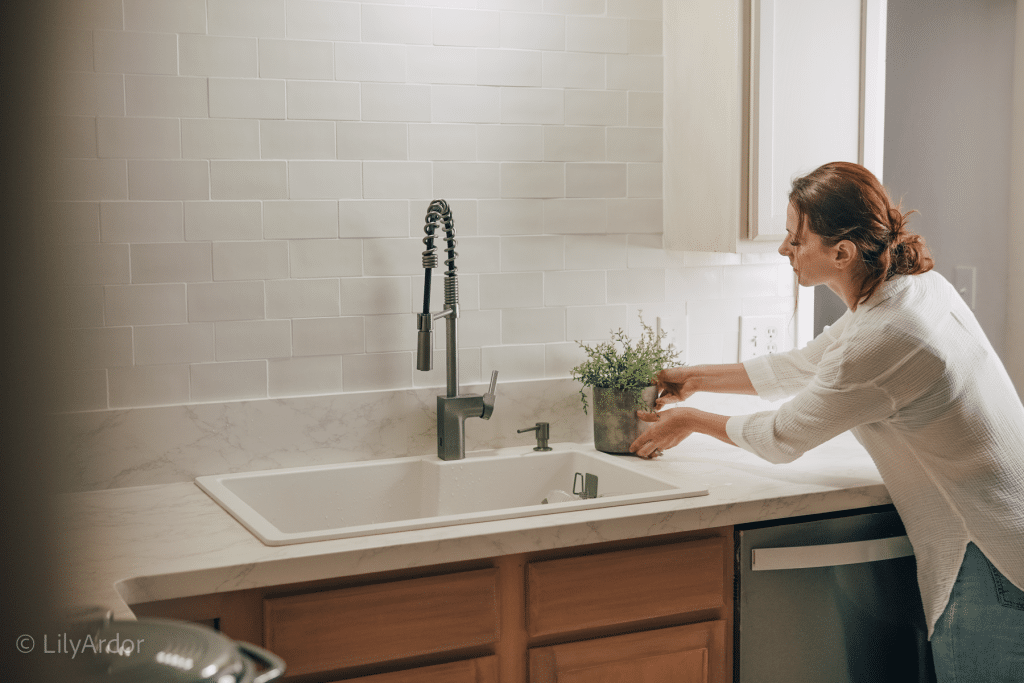
So the 10 #’z of concrete made roughly how many tiles or sq ft?
filled about 6 trays. That’s 36 tiles. We had to do about 3-4 batches of 10 pounds to cover 28 sqft area. Our mistake of making them too thick caused us to have to make more since some were un-usable.
Wow, this tiles and your kitchen looks amazing! I’ll try for sure